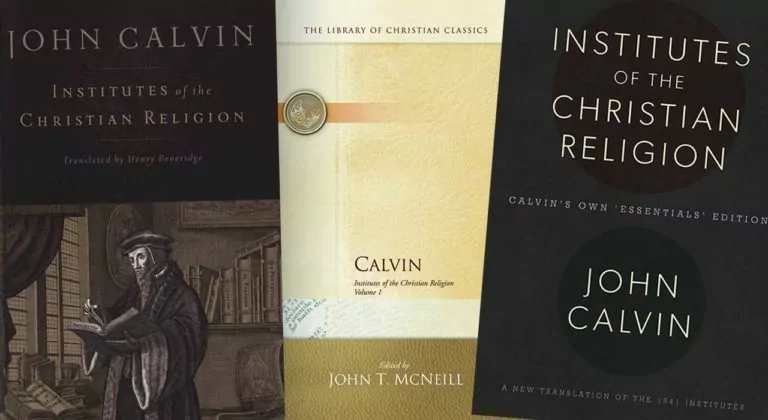John Calvin published five different Latin editions of his Institutes, expanding on it with each new edition. The 1536 edition was just 6 chapters long, and the addition of 17 shorter chapters in 1539 doubled the book’s size. Four more chapters were added in 1543, and then only minor changes made in 1550. But the final, 1559 version was fully 80% larger than its predecessor. In addition to these Latin editions, Calvin also created French versions that, while very similar, were not strict translations – they taught the same doctrine, in the same order, but sometimes said things in different ways.
It is the final Latin 1559 version that most translations are based on, including the two best-known English-language translations: the 1845 Henry Beveridge, and the 1960 Ford Lewis Battles (edited by John T. McNeill), translations.
1845 Beveridge
One advantage of the Beveridge edition is that the copyright has expired on this translation, so it is readily available online for free (there is also a harder to find 1813 translation by John Allen also available online for free – Vol. 1, Vol. 2, Vol. 3 – as well as in print).
Cheap print and e-book copies are also available, but this is where you have to be wary, as some have crisp new type and a beautiful layout, and others look like they are copies of copies of the original 1800s publication, with dark text cramming every nook and cranny of the page. If you plan to be reading the Institutes front to back – all 1,700 some pages of it – then a nice airy, legible layout is important. So buyer beware – be sure that you can take a look at the inside of whatever edition you are buying.
1960 Battles
This edition came a hundred years later, so as you might imagine, the language is somewhat more current. The editor, John T. McNeill also provides lots of helpful explanatory notes at the bottom of many pages. However, as Dr. Bredenhof notes in his Institutes review, McNeill’s liberal theological bias comes out in some of these notes.
2014 White
In addition to being the most modern translation (by Robert White and published by the Banner of Truth) this edition’s main feature is one that will be regarded as a strength by some and a weakness by others – it is based on the much smaller 1541 French edition. It clocks in at just 920 pages, instead of the more than 1,700 pages of the final 1559 version. So, this would be the best one for those interested in checking out the Institutes but who would appreciate an abridgment…in this case, done by the author himself!
Conclusion
While it might seem a trivial thing, I really can’t emphasize enough the importance of buying an edition with an inviting layout. You’re going to be investing a lot of time with this book, whatever edition you buy, and if you get one with dense text, and a hard to read font, it will wear on you. And on that point, the White edition is beautiful, the Battles/McNeill seems good though not great, and the various editions of the Beveridge run the gamut from beautiful to atrocious.
Jon Dykstra and his siblings blog on books at ReallyGoodReads.com.














